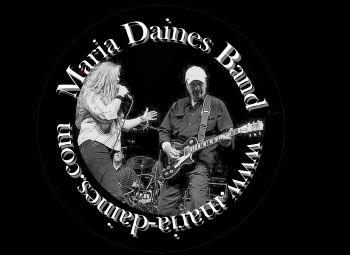
Maria Daines
|
12/5/2006 7:34:03 AM
A Tale of Two Turkeys by Karen Davis
A Tale of Two Turkeys
By Karen Davis, President of United Poultry Concerns
Many people assume that domestic turkeys lack the native intelligence of
their wild relatives. I'd like to challenge this assumption by sharing
my memory of Mila and Priscilla, two turkey hens who lived with my
husband and me for several years in Darnestown, Maryland.
Victims of a truck accident, Mila and Priscilla would have been dead by
the time we adopted them had they not been rescued. Though roughly the
same age, their personalities were very different. Mila was a gentle and
pacific turkey with a watchful face. Priscilla was a moody bird with
emotional burdens.
In the spring and summer, Priscilla would disappear into the woods
around our house, and I would have to go look for her. Eventually I'd
spy her white form nestled in thick vegetation, where she laid many
clutches of eggs that, since there was no male turkey to fertilize them,
never hatched. Priscilla kept trying to be a mother, and perhaps because
she could not, she was irritable much of the time.
When Priscilla got into one of her angry moods, you could see her
getting ready to charge my husband or me, which wasn't pleasant. With
her head pulsing colors, she glared at us with combat in her whole
demeanor. What stopped her was Mila. Perking up her head at the signals,
Mila would enter directly into the path between Priscilla and us, and
block Priscilla's charge. She would tread back and forth in front of
Priscilla, uttering soft pleading yelps as if beseeching her to stop.
Priscilla would gradually calm down.
Scientists now know that birds are intelligent, emotionally charged
beings. The Austrian naturalist Konrad Lorenz helped establish this
fact. Working in the first half of the 20th century, he rejected the
idea that birds are nothing but reflex machines to be studied in
laboratories and subjected to rigged experiments. He studied geese and
other birds in outdoor settings that allowed their abilities to be
expressed. His approach to studying animal behavior is known as ethology.
Lorenz taught that imprinting ' the tendency of young ground-nesting
birds like turkeys and chickens to follow their mothers as soon as they
hatch ' is crucial to their survival as well as evidence of their
capacity for complex memory formation and retention. He also showed how specific gestures have evolved within certain animals including turkeys
to stop a fight.
In his classic book /King Solomon's Ring/ (1952), Lorenz describes what
happens when two male turkeys have been fighting and one of them wants
to quit. The one who has had enough makes a 'specific submissive gesture
which serves to forestall the intent of the attack.' He lies down with
his neck stretched out on the ground.
Daunted, 'the victor behaves exactly as a wolf or dog in the same
situation, that is to say, he evidently wants to peck and kick at the
prostrated enemy, but simply cannot: he would if he could but he can't!
So, still in threatening attitude, he walks round and round his
prostrated rival, making tentative passes at him, but leaving him
untouched'
In the case of Mila and Priscilla, the belligerent hen submitted to the
peacemaker's inhibiting signals. Information was communicated in what
must have been for them a familiar, yet novel, situation involving two
birds genetically programmed for 'meat-type' characteristics that have
supposedly been linked to a reduction in brain weight or size ' crude
measures of intelligence in an era dominated by the power in extremely
small elements from atoms to computer chips.
When they died, my husband and I dug deep holes in the woods behind our house, burying first Mila, followed a few weeks later by her crusty
companion, Priscilla. That is where they had loved to roam, forage, and
sit quietly when they were alive, secure in their knowledge that we were
close by.
_____
|

|